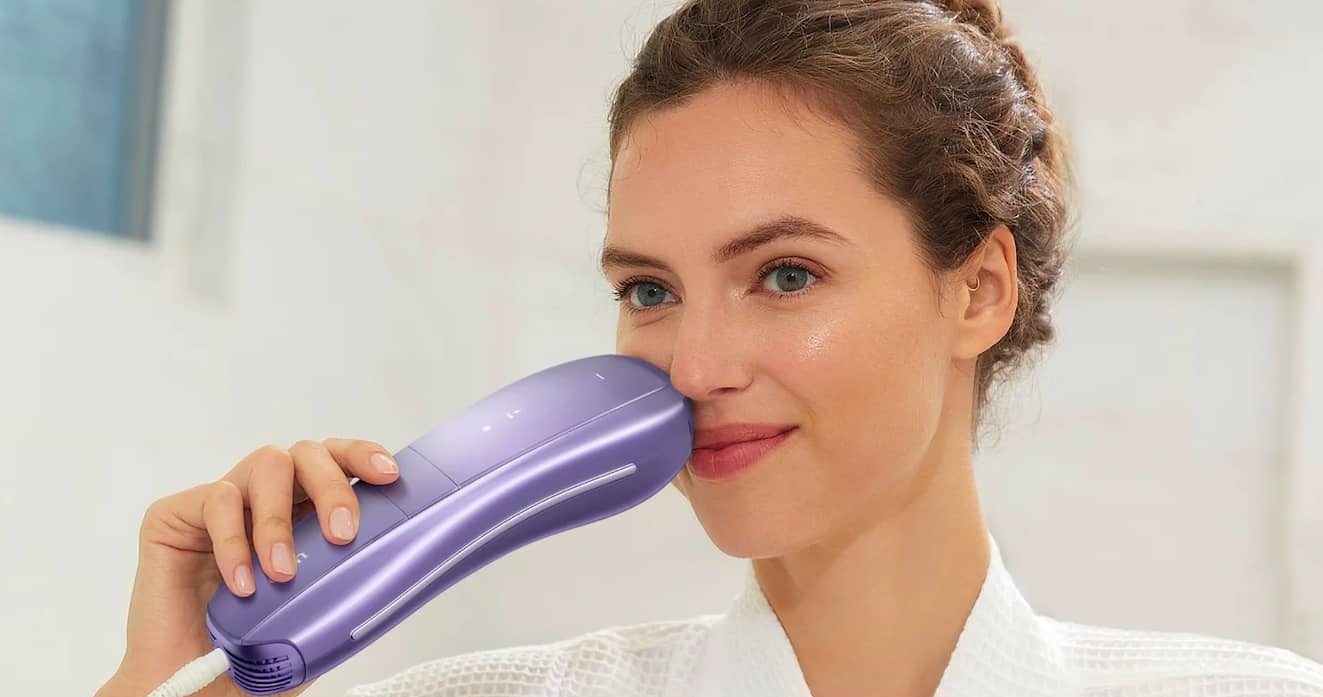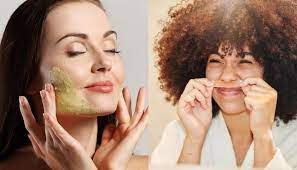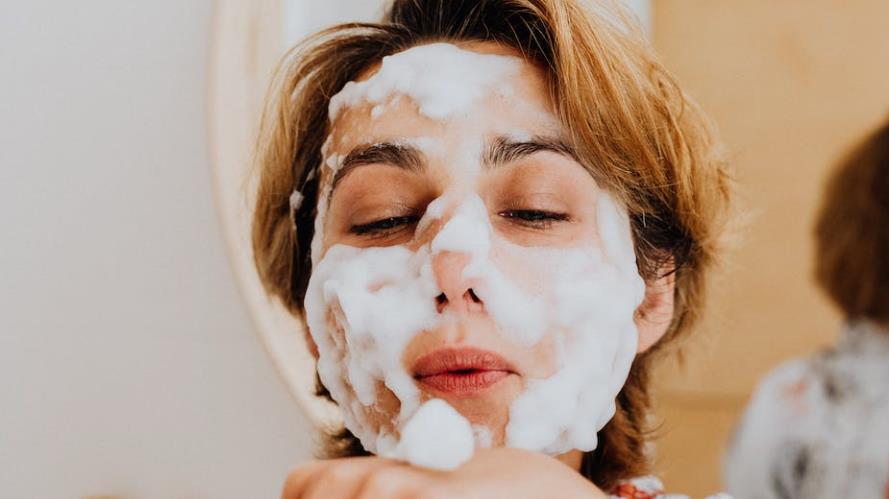While facial hair is natural, society considers women hairless. So, if any woman grows hair on her face, people make it a taboo, making women lose confidence. Also, sometimes excess facial hair grows as a disease presentation, which adds to the discomfort.
So, people go for several temporary and long-lasting methods of hair removal to achieve hairless skin that looks flawless, makes makeup application spotless, and improves skincare product absorption. Each hair removal method differs with respect to cost, effects, results, and pain. In this article, you will learn about facial hair removal.
Causes of Excess Facial Hair
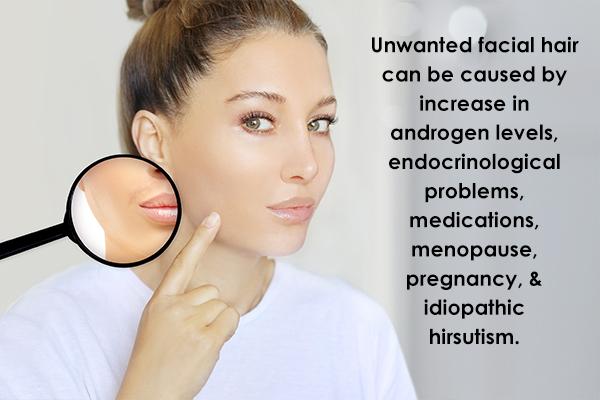
Excess facial hair can be due to:
Hormonal Imbalance
Excess male hormone testosterone or a lack of female hormone estrogen to counterbalance it leads to the eruption of unwanted hair on the face. These hairs grow in the pattern of male facial hair growth, with the hair most obvious on the chin, upper lips, and jawlines.
Excess hair growth can also occur between the eyebrows, on the eyes, and in the nose. Medical conditions like polycystic ovarian syndrome, adrenal gland disorders, and ectopic hormonal production can lead to excess facial hair.
Genetics
At most times, excess hair is just in your genetics. This means your mother or father’s side of the family has genes to grow too much facial hair and those genetics have been transmitted to you. Such excess facial hair could be with or without some underlying disease which is determined by genetics.
For example, some genetic disorders like hirsutism and hypertrichosis run in families and they can be the culprit behind you having unwanted excess facial hair.
Medications

As a side effect, the persistent use of some medications can stimulate hair follicles to produce thicker, longer, and more hair on the face.
Common medicines known to cause hirsutism include steroids in the form of oral contraceptive pills, anabolic hormones; minoxidil, a medicine used to treat baldness; and cyclosporin, a drug that suppresses the immune system can cause excess facial hair growth in women as well as men.
Systemic and Skin Conditions
Some systemic diseases that temper with hormone production, like POEMS and Cushing’s syndrome, can trigger excess hair growth.
In addition, some skin conditions like acne, which makes hair more visible; porphyria Cutanea Tarda, in which skin is more sensitive to the sun and produces hair as a defense mechanism; and dermatomyositis, an autoimmune skin disease, can form a part of the etiology of excess facial hair growth.
Physiological Hormonal Changes
If you notice excess facial hair growth as you enter puberty, exit adulthood, or are ready to welcome your newborn, it is the physiological hormonal changes giving way to the objectionable facial appearance.
There is an alteration in the type and quantity of reproductive hormones produced in conditions like puberty, menopause, and pregnancy. These hormones are the ones that determine secondary sexual characteristics like facial hair.
The Top 8 Facial Hair Removal Methods
Here are the top 8 facial hair removal methods that you can try to reduce excess facial hair safely:
1. IPL Hair Removal
IPL hair removal is one of the most popular ways to remove objectionable hair at home.
How it Works
IPL hair removal uses a handheld device that might be powered by the main supply or a battery to deliver broad-spectrum light in a wavelength ranging from 500 nm to 1200 nm. This light destroys hair follicles after going to the hair roots through hair strands.
Benefits
- Significant hair regrowth reduction
- Results lasting for 6 months or so
- Super fast treatments
- Cost-effective in the long term
- Relatively nearly painless
- Can be done at home
Side Effects
- Mild stinging sensation
- Skin redness and swelling
2. Waxing
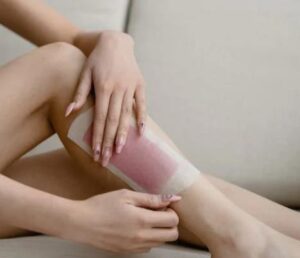
Waxing is the use of a sticky substance that might be soft or hard to adhere to the hair.
How it Works
Waxing material, when pulled off the facial surface, removes hair from the roots. A homemade wax in the form of sugaring can be prepared. It is gentle on the delicate skin of the face.
In addition, waxing strips can be used for a quick and hassle-free waxing session.
Benefits
- Is effective for 3 to 6 weeks
- Exfoliates the skin
- Hair grows back to be thinner and weaker over time
Side Effects
- Painful
- This can lead to ingrown hair and hair follicle infection
- Can cause micro tears in the skin
3. Threading
Threading, as the name implies, involves using a thread to remove unwanted hair on the face.
How it Works
Mostly done for upper lips and eyebrows, a twisted thread grabs the hair near the skin surface and pulls it out of the roots as it is moved.
It removes multiple strands of hair at one time and removes hair quickly and makes sure no hair is left behind.
Benefits
- Skin-friendly for the facial skin
- Results last for a month or more
- There is absolutely no cost of threading
- Can grab every length of a hair strand
Side Effects
- Painful and uncomfortable
- Not safe for sensitive skin
- May grab the skin in addition to hair
4. Shaving
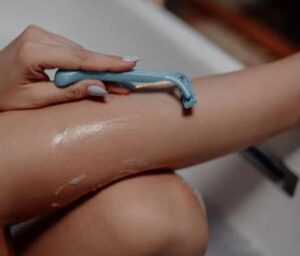
Shaving is a technique of hair removal similar to derma planning which can be done at home without the need for an aesthetician.
How it Works
It is the use of a specific shaving razor designed for the face, pulling the skin tight, and trimming the hair from the skin surface with small strokes of the razor.
Benefits
- Super fast hair removal takes only a minute or two for full face.
- Nearly painless
- Can be used to remove dead skin cells and trapped impurities as well
- Extremely inexpensive
Side Effects
- Can cause skin redness, bumps, ingrown hair, razor burns, infection, and cuts
- Blunt hair regrows back within a few days
5. Tweezing or Plucking
Tweezer or plucking is one of the most used methods to remove unwanted facial hair.
How it Works
Tweezing is the use of a tweezer to grab and pull individual strands of hair from the skin manually. A Tweezer is a forceps-like tool made of metals.
Plucking is the removal of unwanted hair from the face by using a thread or a tweezer.
Benefits
- Results lasting for a month or so
- Perfect for chin hair and stray hair on the eyebrows
- Hair removal with precision
- Easy to maintain
Side Effects
- Can cause pain or discomfort
- Time-consuming
- This can lead to bumps on the skin
6. Hair Removal Creams
Although commonly used for the body, hair removal creams are available for excess facial hair as well.
How it Works
They contain proteolytic chemicals that remove unwanted hair by breaking the protein bonds present in hair strands at a specific point. The results of depilatory creams last longer than shaving and shorter than waxing.
Benefits
- Cause no pain or discomfort
- Takes 3 to 5 minutes for the facial hair removal
- Some creams contain skin-soothing ingredients as well
Side Effects
- Lingering chemical smell
- Can cause skin irritation, allergy, and chemical reaction
7. Laser Hair Removal
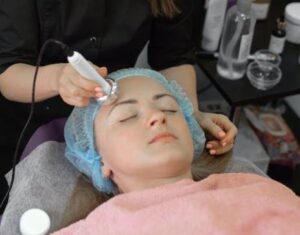
Laser hair removal has been the dream procedure of women to go hair removal until the launch of IPL hair removal.
How it Works
Laser hair removal is a professional procedure in which the professional uses a diode of Nd: Yag laser machine which emits mono-chromatic rays of the light. These rays just like IPL, reach the hair follicles and burns them.
However, this beam is more intense and it treats one section of hair at one time as compared to IPL and can only be done at a laser clinic or salon.
Benefits
- Hairlessness lasting for a year and more
- Precise hair removal leaving skin intact
- Non-invasive procedure
- Safe for skin
Side Effects
- Painful with variable intensity
- Skin redness, swelling, and photosensitivity
- Laser burns, blisters, and scarring
8. Electrolysis
Electrolysis literally means the breakdown of unwanted hair using electricity.
How it Works
It is the passage of the current using a thin filament-like wire into the hair. This current burns hair follicles in a way that they can never regenerate again.
Each session of electrolysis can take a while as individual hair strands are treated at one time. Also, it is expensive.
Benefit
- The only FA-cleared method of hairlessness lasting forever
- Can be done on any hair color and any skin type
- Suitable for small areas like the face
Side Effects
- Skin discoloration
- Infection of hair follicles
- Skin scarring
The 5 Best Methods to Remove Facial Hair Naturally At Home
1. Alum and Rose Water
Although alum is used commonly for its astringent properties, it works as a hair removal agent as well. To remove hair with alum, take 1 tablespoon of finely grained alum powder and add 2 tablespoons of rose water into it to make a well-mixed solution.
Then apply this mixture to the area of the face you want to treat and wait for it to dry. When it is dry, repeat the application 2 to 3 times and rub it off the face gently. It will remove unwanted hair and also reduce its growth eventually.
2. Corn Starch and Egg White
Corn starch and egg white make a peel-off mask to eradicate unwanted hair from the roots by pulling them out from the skin. To make this mask, squeeze out 1 egg white and mix 1 tablespoon of sugar and 1 tablespoon of cornstarch into it. Mix these contents thoroughly and apply them all over the face.
When this mask is dried, gently remove it in the direction opposite to the direction of hair growth.
3. Sugar, Honey, and Lemon
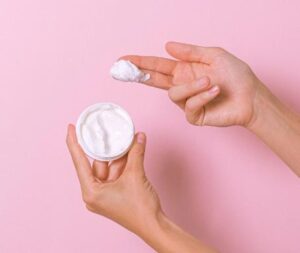
Take about 2 tablespoons of sugar and add 1 tablespoon of honey and 1 tablespoon of sugar. Then heat it at low flame until a thick mixture is formed. This mixture can be used to remove unwanted hair from the face just like waxing. However, it needs no strips and is relatively nearly painless.
4. Gram Flour, Turmeric, and Rose Water
Gram flour can exfoliate the skin and also produce friction to eradicate facial hair. Turmeric works to soften the hair and reduce its regrowth, and rose water ensures that the skin is not irritated with constant rubbing. So, these three can make a magic potion to remove unwanted facial hair.
Mix these ingredients in a ratio of 2:1:2 and make a pasty substance. Then apply it all over your skin. When it dries off, wet it again by spraying rose water. When it is damp, use the gentle pressure of your fingertips to rub this mask off in circular motions.
Trying this mash twice a week for a few months can help you successfully remove unwanted hair.
5. Gelatin and Milk
Unflavoured gelatin and milk can help you eradicate even the thickest of unwanted facial hair with its strong adherence properties. You can use equal amounts of gelatin and milk to heat it into a well-mixture facial peel-off mash.
Then apply it over your skin in a way that the unwanted hair is covered with a thin layer of this mask in the direction of hair growth. Wait for 20 to 30 minutes for the mask to dry and remove it from below upwards in a way that the mask moves in the direction opposite to the hair growth.
How To Take Care of Your Skin Before and After Facial Hair Removal
Before Hair Removal
A few tips and tricks can help in reducing the potential side effects of facial hair removal methods. So, you can follow the suggestions given below to take good care of your skin.
- Remove dead cells and impurities by weekly exfoliation
- Always wash your face with a cleanser and dry it before using any hair removal method
- If you are wearing makeup or any skincare product, make sure to thoroughly remove it
- Go for the facial hair removal method best suited for your skin type
- Do a patch test every time you try a new method
After Hair Removal
The following measures can help you deal with the after-effects of facial hair removal.
- Wash your face with water to soothe the skin
- Ice the face to calm skin redness
- Apply a good moisturizing cream or lotion on your face
- Stay indoors and wear sunscreen whenever you go outside
Conclusion
Facial hair removal can be further divided into different types depending upon the location where it is done as in an in-salon and at home; the results it offers including temporary and long-lasting; and the techniques including natural and instrumental methods.
The best methods for facial hair removal are IPL which is convenient and long-lasting; laser which is semi-long-lasting and precise; electrolysis which is practically long-lasting; waxing which reduces hair regrowth slowly; threading which is inexpensive; shaving which is super fast, and hair removal creams which are a quick fix.
Which of these methods to choose is entirely dependent on your personal facial hair removal requirements and expectations.

 By myulikeadmin
By myulikeadmin
